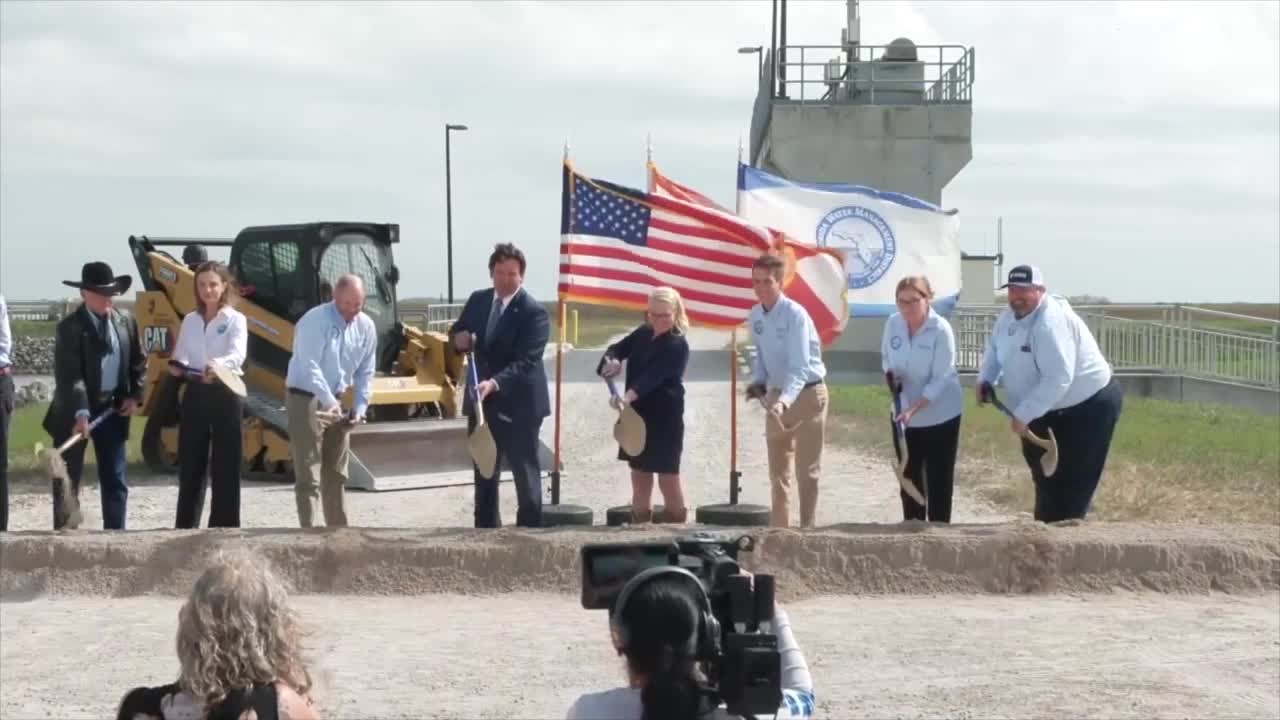PALM BEACH COUNTY, Fla. — Governor Ron DeSantis was in Palm Beach County on Thursday for the groundbreaking of the Everglades Agricultural Area (EAA) Reservoir Pump Station — a key component in the state’s ongoing Everglades restoration efforts.
DeSantis called the project “another major step” toward restoring what he described as the country’s “most unique and prized ecosystem,” the Florida Everglades.
Located just south of Lake Okeechobee, the EAA Reservoir is designed to store more than 78 billion gallons of water and deliver up to 470 billion gallons of clean water south into the Everglades and Florida Bay. To put that in perspective, the area covered by the reservoir is roughly the size of Manhattan.
“That’s enough to lower Lake Okeechobee by six inches and significantly reduce harmful discharges,” DeSantis said.
For communities in Southwest Florida, those discharges have had devastating impacts in the past. During the 2018 water crisis, large discharges from Lake Okeechobee contributed to widespread algal blooms that hurt local economies and ecosystems.
“If there was another horrible discharge event like we saw in 2018 happening today, that would mean 43,000 jobs lost in Lee, Collier, and Charlotte counties, as well as tens of billions of dollars in economic damage,” said Captain Daniel Andrews, co-founder of Captains for Clean Water, a nonprofit advocating for Everglades restoration.
Andrews said the EAA Reservoir has been one of the group’s top priorities for years.
“It provides more return on investment than any other project in Everglades Restoration for stopping those discharges,” he said.
However, Andrews expressed concern about the nearby Southland Rock Mine Project, which borders the reservoir site.
“Four billion dollars is a lot of money for a project,” he said. “We need to make sure this project is able to operate safely. When the Army Corps of Engineers says there’s a risk to that operation, that’s not good.”
The U.S. Army Corps of Engineers has publicly opposed the Southland Rock Mine, warning that deep-rock mining and blasting could threaten the reservoir’s structural integrity, hydrology, and overall effectiveness.
Construction on the EAA Reservoir is expected to be completed by 2029.
This story was reported on-air by a journalist and has been converted to this platform with the assistance of AI. Our editorial team verifies all reporting on all platforms for fairness and accuracy.




